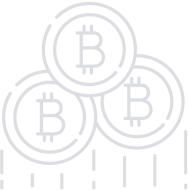It consists of many parachains with potentially differing characteristics which can make it easier to achieve anonymity or formal verification. Transactions can be spread out across the chains, allowing many more to be processed in the same period of time. Polkadot ensures that each of these blockchains remains secure and that any dealings between the are faithfully executed. Specialised parachains called bridges can be created to link independent chains.
STO/ICO Status
Claim this listing and publish updates.
Basics
| Platform | Ethereum |
|---|---|
| Type | ERC20 |
| Accepting | ETH |
| Circulating Supply | 50% |
| KYC | N/A |
| Restricted Areas | N/A |
| Homepage | Website URL |
| White Paper | View/Download |
About
Polkadot allows new designs of blockchains to communicate and pool their security while still allowing them to have entirely arbitrary state-transition functions.
This opens to the door to a network of blockchains, where private and consortium chains can be firewalled from open and public chains like Ethereum without losing the ability to communicate with them on their own terms, not unlike the intranet/internet synergy we see today.At a high level, here are the problems we are attempting to solve:1. Interoperability
Polkadot is designed to enable applications and smart contracts on one blockchain to seamlessly transact with data and assets on other chains.2. Scalability
Polkadot gives the ability to run several parachains*, each processing multiple transactions in parallel, which allows networks to obtain infinite scalability.3. Shared Security
With Polkadot, security is pooled within the network, which means that individual chains can leverage collective security without having to start from scratch to gain traction and trust.
